Zarvan
ELITE MEMBER

- Joined
- Apr 28, 2011
- Messages
- 54,470
- Reaction score
- 87
- Country
- Location
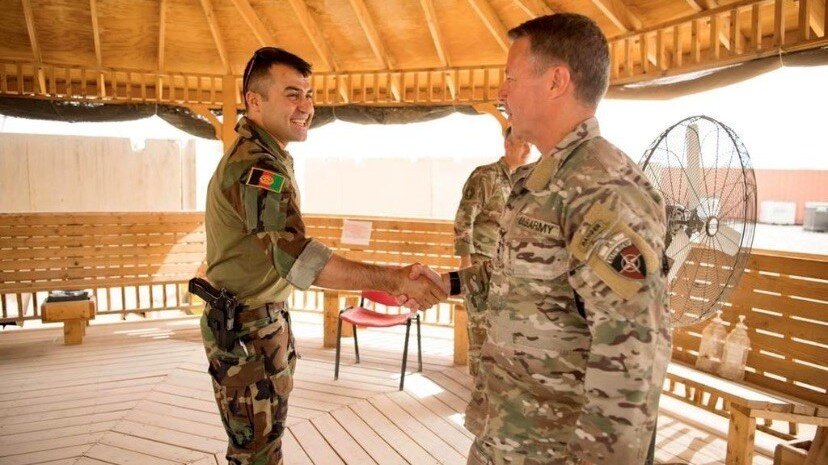
Afghan Gen. Sami Sadat (left) greets U.S. Gen. Scott Miller, the head of the U.S.-led coalition in Afghanistan, in the southern province of Helmand earlier this month. U.S. and NATO forces are withdrawing within months, raising questions about how the Afghan military will fare on its own against the Taliban. "For the past one year the Afghan forces have held their ground pretty well," Sadat said.
Courtesy of Gen. Sami Sadat
Just a few days ago, Afghan Gen. Sami Sadat and his soldiers conducted a night raid against the Taliban in the country's southern Helmand province, a flat desert expanse peppered with mud houses and farm fields.
"I went there for eight hours, freed up to 50 prisoners, killed a bunch of Taliban," he told NPR's Mary Louise Kelly from his headquarters. "We occupied the Musa Qala bazaar for seven hours and it was all an Afghan plan, Afghan intelligence, Afghan air force and one of our special forces units."
Sadat is just 35 and was barely out of his teens when British troops fought in the same area in 2006, pushing back the Taliban, digging up roadside bombs and taking numerous casualties. Musa Qala was described as being "bathed in British blood." The U.S. Marines came a few years later, facing the same tough and resilient enemy before withdrawing in 2014 and handing over control to the Afghans.
Article continues after sponsor message
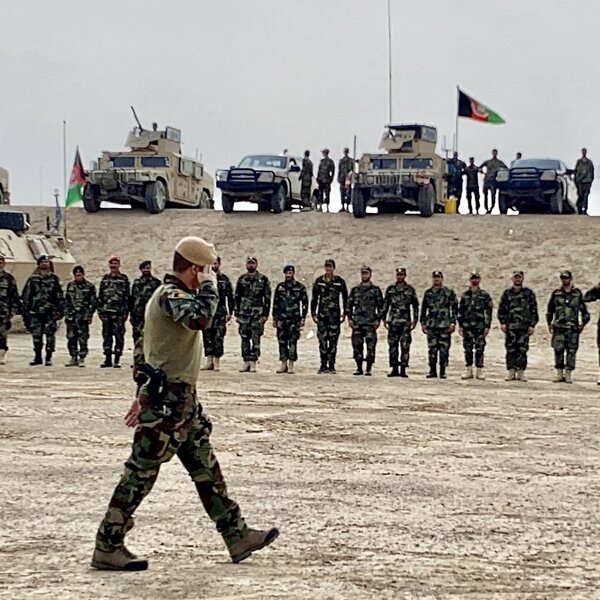
MIDDLE EAST
Afghan General Says Army Will Survive U.S. Troop Withdrawal
The Taliban then swept back in. And Sadat, who trained with British soldiers in England and Marines in the U.S., is now doing precisely what they did during the past 15 years.
"We start our day with digging out a lot of (bombs) laid on the roads and then (military) contacts with the Taliban," he said. "The Taliban are trying to establish illegal checkpoints and charge traders and passengers as they pass along."
A just-published report by the Special Inspector General for Afghan Reconstruction, John Sopko, found that officers like Sadat are facing even more Taliban attacks, which rose 37% from January through the end of March compared to the same time last year.
That's not all. Sopko found that insider attacks — where Afghan soldiers and police attack their own — were up 82% over the past year with 115 killed and 39 wounded. Overall, Afghan security forces casualties are "substantially higher" than last year, the report said, though neither the Afghans nor the Americans are willing to release precise figures.
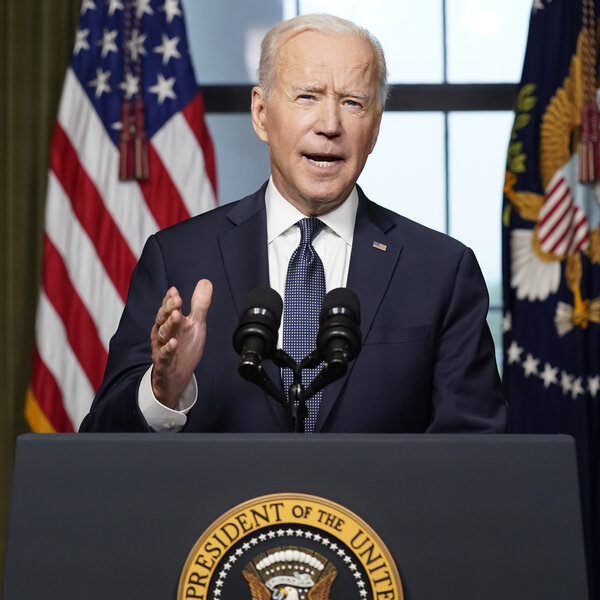
POLITICS
'It's Time To End This Forever War.' Biden Says Forces To Leave Afghanistan By 9/11
Operating independently
If there's a bright spot in the report it's the ability of the Afghan military to conduct operations without U.S. support. Such independent operations like Sadat's night raid nearly doubled over the past year.
"Suddenly we saw the U.S. forces not at our table every morning helping us or mentoring us or advising us," Sadat said in his interview with NPR. "It was on our own and to be honest, for the past one year the Afghan forces have held their ground pretty well."
What's uncertain is whether the Afghan army will be able to hold ground after some 2,500 U.S. troops as well as 7,000 NATO troops leave, together with an estimated 17,000 contractors, including 6,000 Americans. It is those contractors who maintain the Afghan vehicles and aircraft used in that night raid in Musa Qala.
U.S. officials promise they will stand with the Afghanistan government and security forces after the withdrawal, continuing the financial assistance that includes $88 billion spent on security forces since 2002, including $3 billion for this year.
"The president has given us a new mission," Defense Secretary Lloyd Austin told reporters earlier this month during a meeting with NATO leaders in Brussels. "To responsibly draw down our forces and transition to a new relationship with our Afghan partners. And we will continue to support them in those efforts. We will look to continue funding key capabilities such as the Afghan air force and Special Mission Wing, and we will seek to continue paying salaries for Afghan security forces."
But Austin didn't explain how that would happen once all U.S. and NATO forces and the contractors leave the country.
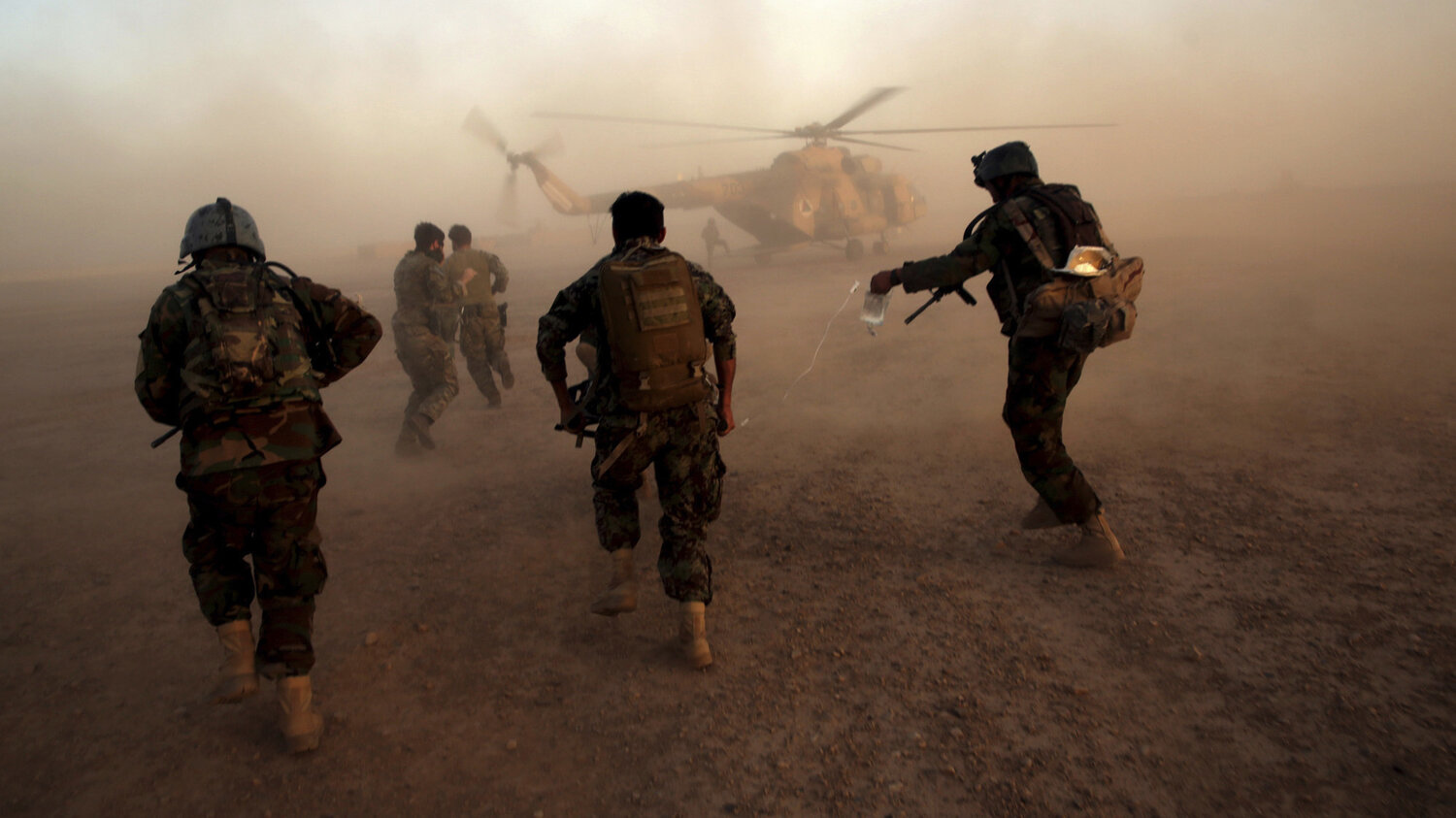
Afghan army commandos train at the Shorab military camp in Helmand province, in southern Afghanistan, in 2017. With U.S. and NATO forces leaving in the coming months, the Afghan forces will have to confront the Taliban without support from Western countries.
Massoud Hossaini/AP
Critical maintenance
Right now contractors provide nearly all maintenance and training for the Afghan air force, and most of the Afghan army's ground vehicles. The Special Inspector General's report said that without contractor support, "no airframe can be sustained as combat effective for more than a few months."
Even with contractor help, there are problems for the Afghan air force. It has 167 aircraft, with 136 usable, a drop of 24 from the previous quarter.
So what is the U.S. plan to help?
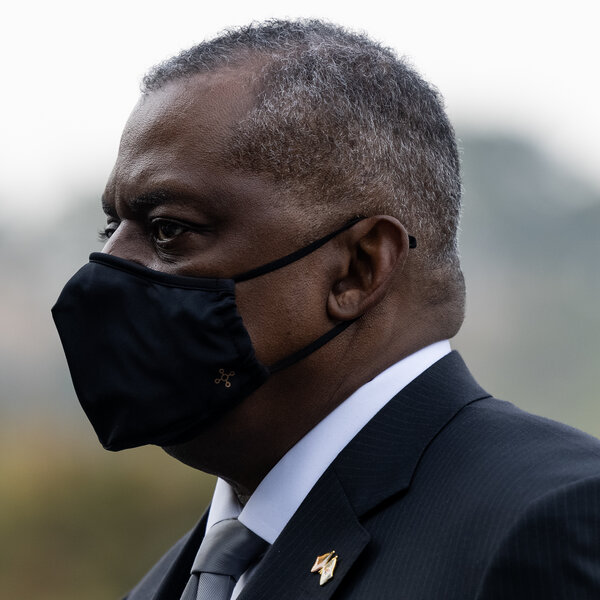
WORLD
U.S. Defense Chief Austin Goes To Afghanistan Amid Questions Over Withdrawal Date
"We're examining alternatives to assist the Afghans and their maintenance effort from a distance," Gen. Frank McKenzie, the top U.S. commander for the Middle East region told reporters recently. "I don't want to minimize that problem or, you know, make it appear easier than it's going to be."
"We're certainly going to try to do everything we can," he added, "from distant locations to assist the Afghans as they maintain the aircraft and the other platforms that — that will be essential for the fight ahead of them."
But what if a Humvee breaks down in Helmand province, will it go to another country? And what about aircraft?
"Aircraft's probably a little easier," he said. "Aircraft maintenance is typically done at a centralized location. We might be able to work some remote, televised way to do that. We want them to be successful, that remains a very high priority, so we will look at innovative ways to do that. We're still working those out right now, but I acknowledge that it's going to be a lot harder to do once you're out of the country."
For his part, Gen. Sadat is upbeat about the way ahead.
"We will beat the odds. We always did," he said. "Now call me an optimist, but this is what I am. You know this is why I serve. This is why I chose the worst place in Afghanistan to take command and lead."
What Happens To The Afghan Army Once American Forces Leave? : NPR





